Everything You Need to Know About Online Review Monitoring
Table of contents
Review monitoring has become an integral part of the online reputation-building process. No wonder – even half of customers trust online reviews as much as personal recommendations from their family and friends. Therefore, modern companies based on solid foundations must include review monitoring in their business strategies.
You only got one chance to make the first impression. This well-known quote is an accurate explanation of why online reputation matters.
There are countless things your brand reviews impact on. Positive reviews work like leverage. They improve your local SEO, boost your sales, increase online visibility, and strengthen your reputation.
Similarly, poor customer feedback can undermine all your efforts and sink your business. The harmful power of negative reviews is not a secret. Still, as much as 75% of businesses don’t respond to them!
I could spend many hours enumerating all the pros of online reputation management & review monitoring. But the fact you’re reading this article means that there is no need to convince you.
I’m happy that you understand the importance of your brand reputation and treat this game seriously!
Without further ado, let’s explore the process of review monitoring.
What is review monitoring?
Review monitoring means tracking online evaluations of your brand shared across the Internet. Reviews can appear on designated review sites, apps, social media platforms, videos, blogs, podcasts, and numerous other sources.
Seems a huge challenge? Oh, it is! I will show you how much.
In fact, nearly half of the global Internet users post at least one online review each month. It translates to a staggering 2.6 billion new reviews in just 30 days! And I must say, it’s a very conservative estimate.
Now, add to this hundreds or even thousands of websites where people can express their opinions. Considering these facts, online review management and monitoring seem like finding the right paths in multi-level labyrinths.
Of course, some reviews are much easier to track & analyze than others. Let me briefly explain to you two major review categories. That will allow you to understand the review monitoring process better.
Depending on where the review appears, we have first-party and third-party reviews.
First-party review is an opinion about your brand published directly on your website. This type of review gives you huge control over what you would like to demonstrate (or not) and how.
On-site evaluations and testimonials improve the perception of your brand. They increase trust, allow you to showcase your top advantages, and positively impact your brand image.
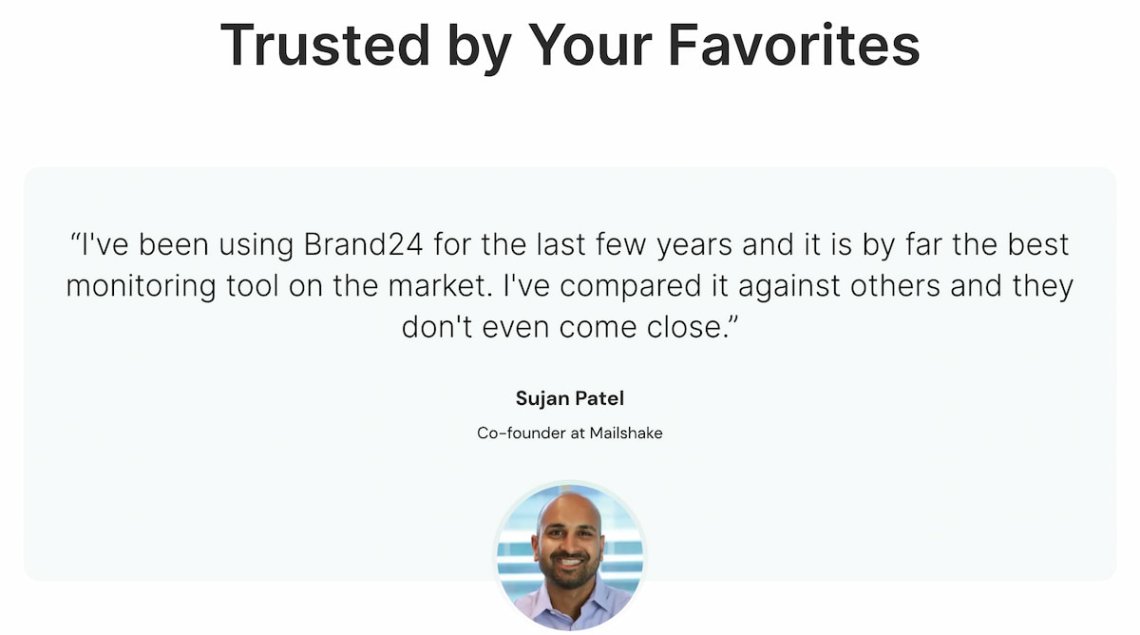
Third-party review means customer feedback done by someone who is not directly affiliated with the commented brand. Third-party reviews are published on designated review websites and in other places (apps, blogs, forums, podcasts, news sites, and so on).
Google Maps is a great example of a general third-party review platform. As for industry-specific reviews, you might have heard about IMDB (for movies a TV series reviews) or G2 (for software reviews).
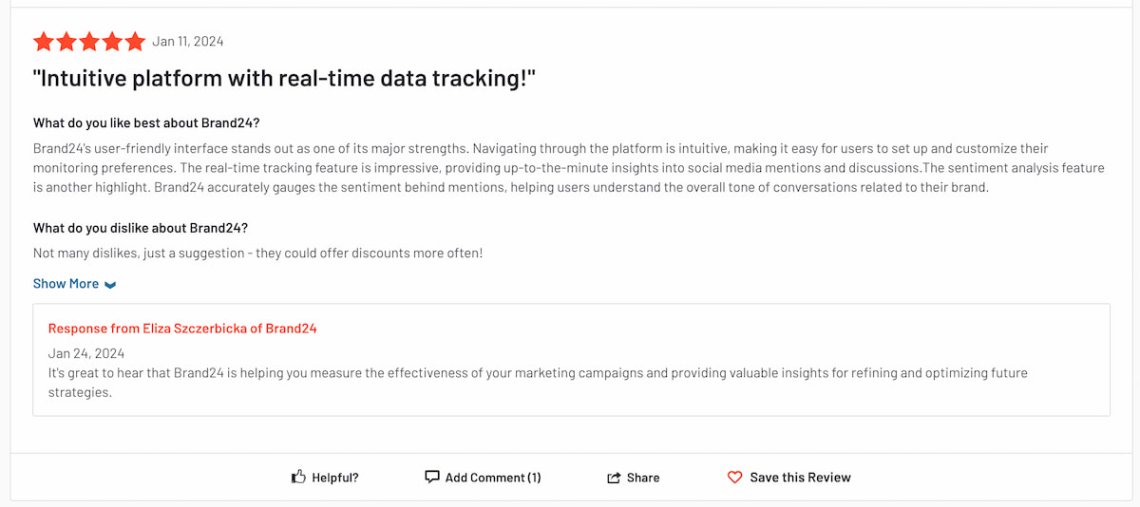
People usually treat third-party reviews as more trustworthy & credible compared to first-party reviews. They are much more independent, difficult to control, and hence – less likely to be biased.
Review monitoring refers mostly to third-party reviews.
There is no need to explain first-party reviews further. I think you’ve got the point.
But let’s dive a little bit deeper into third-party reviews. What two main categories do we have here? These are platform reviews and external reviews.
Platform reviews mean all opinions and evaluations posted on dedicated review websites and apps that are directly associated with your brand. Depending on your business, it could be Google Maps, TripAdvisor, Trustpilot, AppStore, Amazon, etc.
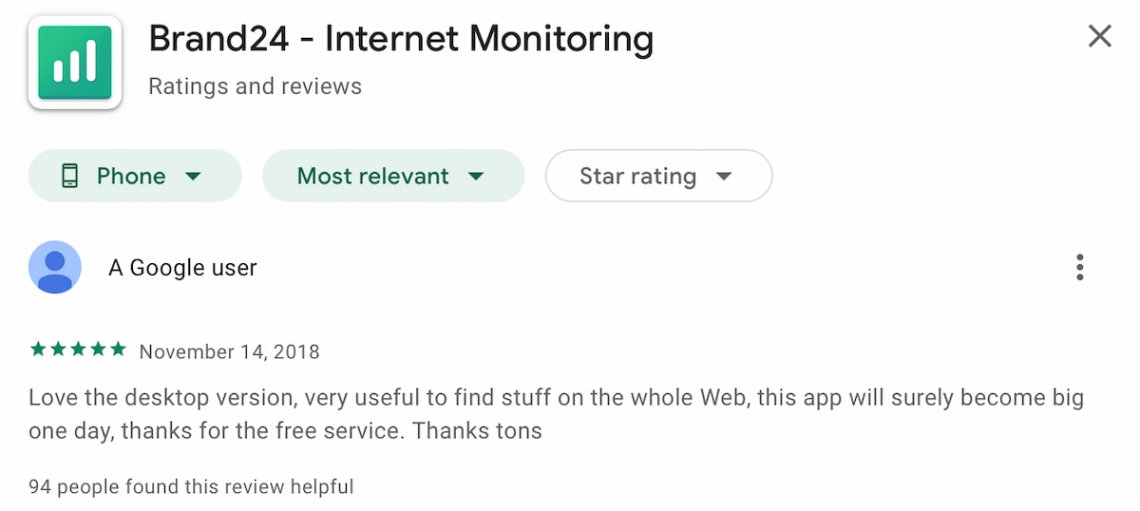
External reviews, on the contrary, mean all reviews of your brand posted on alternative sources. It can be a review published on a blog, news site, forum, social network discussion, etc.
These external reviews can be linked (provide a link back to your site, easier to detect) and unlinked (don’t provide a link back to your site, difficult to detect).
Here, you can see the example of two unlinked Nike running product reviews.
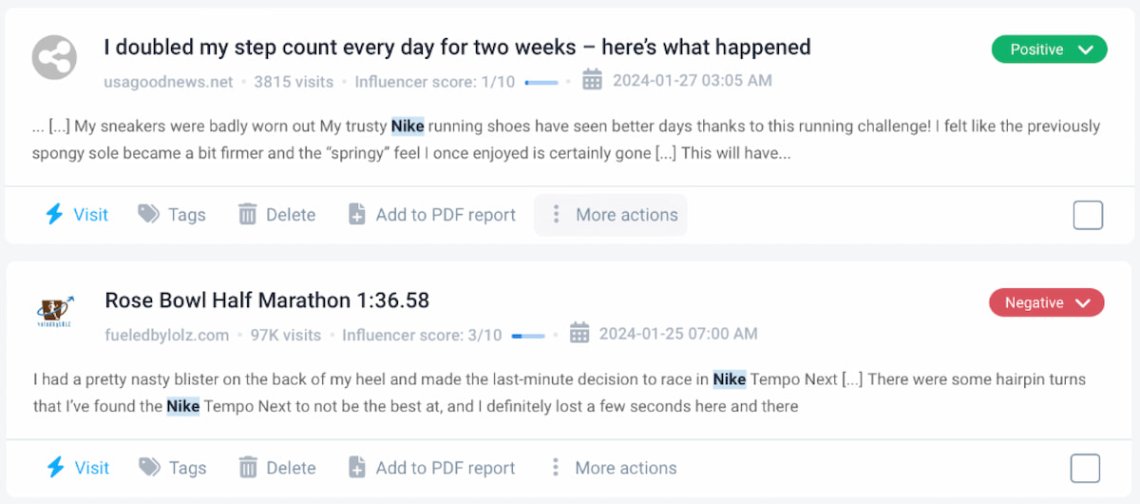
So, as you can see, review monitoring is a complex process that requires tracking a lot of data coming from multiple sources – internal and external, linked and unlinked.
Equipped with that knowledge, you’re ready to familiarize yourself with the review monitoring process.
How to monitor reviews?
01 Monitor mentions
Now you know that reviews are everywhere. You can find them both on dedicated review sites (such as Yelp, TripAdvisor page, or Facebook page) and in other places.
From a technical point of view, online reviews that appear outside dedicated review sites are mentions about your brand.
That’s why brand mentions monitoring is so important to detect reviews, even if they’re posted on platforms that aren’t typically used for leaving customer feedback.
I know that after introducing you to different review types, it may seem to be a task requiring a lot of fatigue. Fortunately, we live in a world with solutions to overcome this problem.
Media monitoring tools are software designed to identify public mentions. In fact, it depends on you what keyword or set of keywords the media monitoring tools will detect.
It can be a brand name, hashtag, or any word (or set of words) that would help you manage your brand’s reputation with one tool.
The great thing about media monitoring tools is that with them, you can monitor both linked and unlinked reviews from many sources.
The top review monitoring tools like Brand24 collect data about reviews from numerous sources:
- Social mentions (Facebook, Instagram, YouTube, TikTok, Twitter, Twitch, Quora, Reddit, Telegram)
- Multiple review sites and apps (TripAdvisor, Yelp, Booking, AppStore, Google Play, Trustpilot)
- Podcasts
- Blogs
- Forums
- Other websites
Moreover, the best review monitoring tools provide you with a huge amount of invaluable data.
The number of reviews & their reach, sentiment analysis, your top brand ambassadors, notifications about new reviews – these are just some examples.

Besides, Brand24 introduced a new AI-boosted feature, making mention tracking and analysis even more effective.
The Anomaly Detector identifies unusual changes in your brand’s mentions profile. Then, it automatically analyzes what was the reason for the sudden spike or drop and presents the conclusion.
Additionally, the Anomaly Detector can help you reveal non-obvious & valuable insights, identify feelings towards your business actions (i.e., reviews of a new Nike Dunk model), and save you a lot of time on manual analysis.

Thanks to using the top review monitoring tool, you can:
- Find both linked and unlinked reviews
- Track business reviews posted on review sites, social media, and many other sources
- Get a notification about every new review
- Make use of AI-backed Anomaly Detector
02 Explore review analytics
Unless you’re a small business generating just a few monthly reviews, analyzing reviews often requires an online review monitoring tool.
Here, I will show you three crucial steps to review data properly.
Step 1. Link sources
As I mentioned before, the Brand24 tool has many useful features for review monitoring. Depending on your business, you can directly track and analyze reviews on the top third-party review websites: TripAdvisor, Yelp, Booking, App Store, Google Play, and Trustpilot.
Collectively, Google, Yelp, TripAdvisor, and Facebook account for 88% of all online reviews.
To make the most of this feature, you should paste the link to your profile on a review site. You can also add links to your competitors’ profiles to perform a competitor analysis of your reviews.
Let’s take the example of the Netflix app.
This popular streaming platform has its own app for iOS and Android. First, I checked if I added direct links in Project Settings – Additional sources.
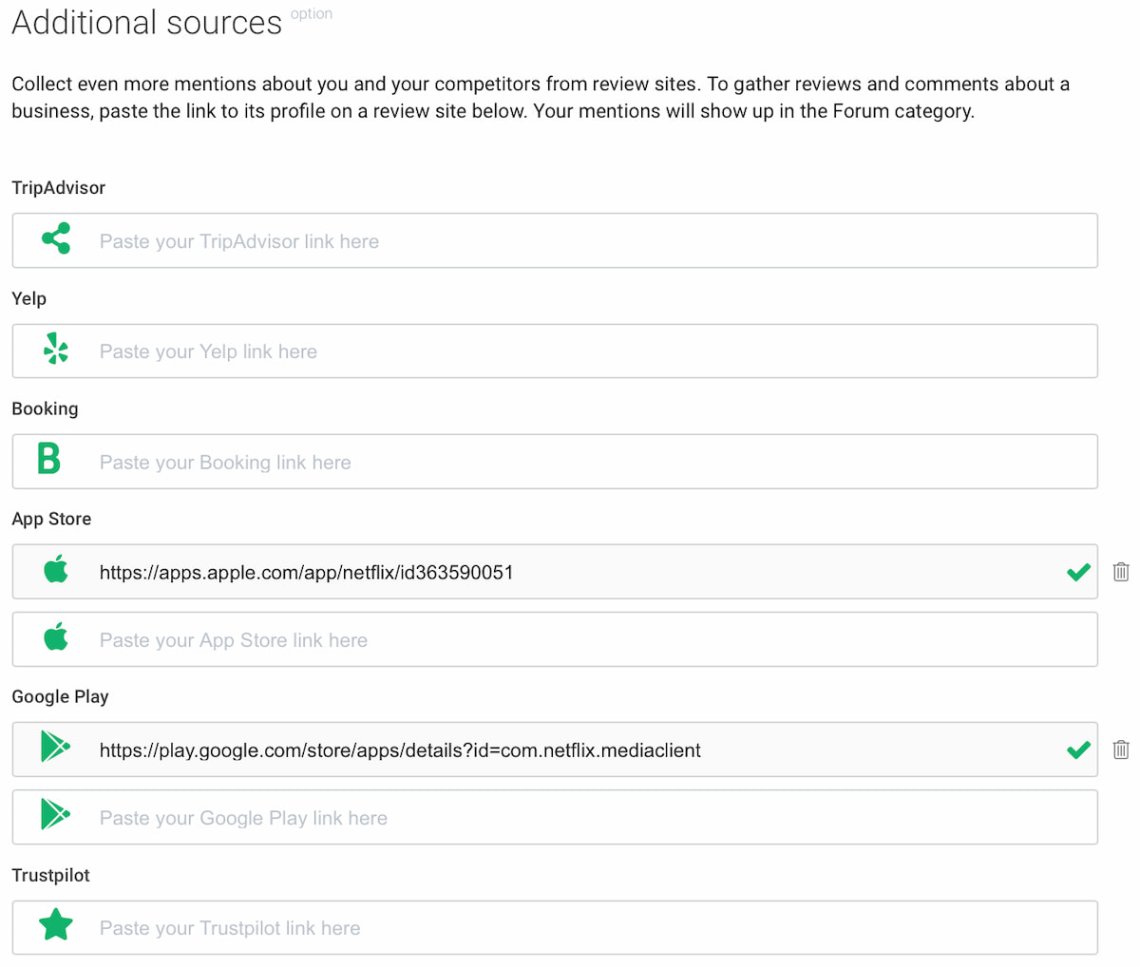
Step 2. Filter results to reviews
Now, I can visit the Mentions tab to start the review analytics for my project.
But first, I need to narrow down all results only to the App Store and Google Play. How? By using the Domain filter on the right tab.
I typed “apps.apple.com {OR} play.google.com”. The “{OR}” operator indicates that I want to see results from both websites.
You don’t have to remember to type this filter every time. Once you apply this filter, you can save it for the future and use it with just one click.

Step 3. Analyze reviews
Ok, and what about the app’s review analytics?
At this time, I wasn’t interested in their volume and reach. I wanted to check the general sentiment toward the Netflix app.
Apparently, reviews from both mobile app distribution platforms present relatively negative feelings toward the Netflix app. There is a visible spike in negative reviews around January 7th.
I dug deeper for the reason for that spike. It turned out that on January 7th, many Netflix users faced some payment issues.

Netflix’s reviews example shows how tracking and analyzing sentiments and trends lets you stay informed about customer opinions.
Brand24 allows you to identify your pain points and promptly address any issues.
03 Monitor the progress
If you want to get the most out of the whole review monitoring process, you must monitor your progress. Limiting yourself to track online reviews, shrugging your shoulders, and saying “It is what it is” is, well, a waste of your resources.
Remember, if you’re not moving forward, you’re moving backward.
Thanks to monitoring your positive and negative reviews, you will know how their proportions change over time.
When your positive review ratio goes up, it’s invaluable proof of the effectiveness of your business, communication, and product strategy.
On the other hand, spotting your review regression can help you prevent or stop a rapid drop in your online reputation.
Even 86% of people will hesitate to buy from a business with negative online reviews. Therefore, monitoring your review performance can literally be your brand’s lifesaver.
Ok, let’s put it into practice and go back to our Netflix app example!
I wanted to check if the app’s reputation has progressed or regressed. I used Brand24’s Comparison tab to check the review performance in two consecutive periods.
To make my experiment more relevant, I again limited review sources to the App Store and Google Play.
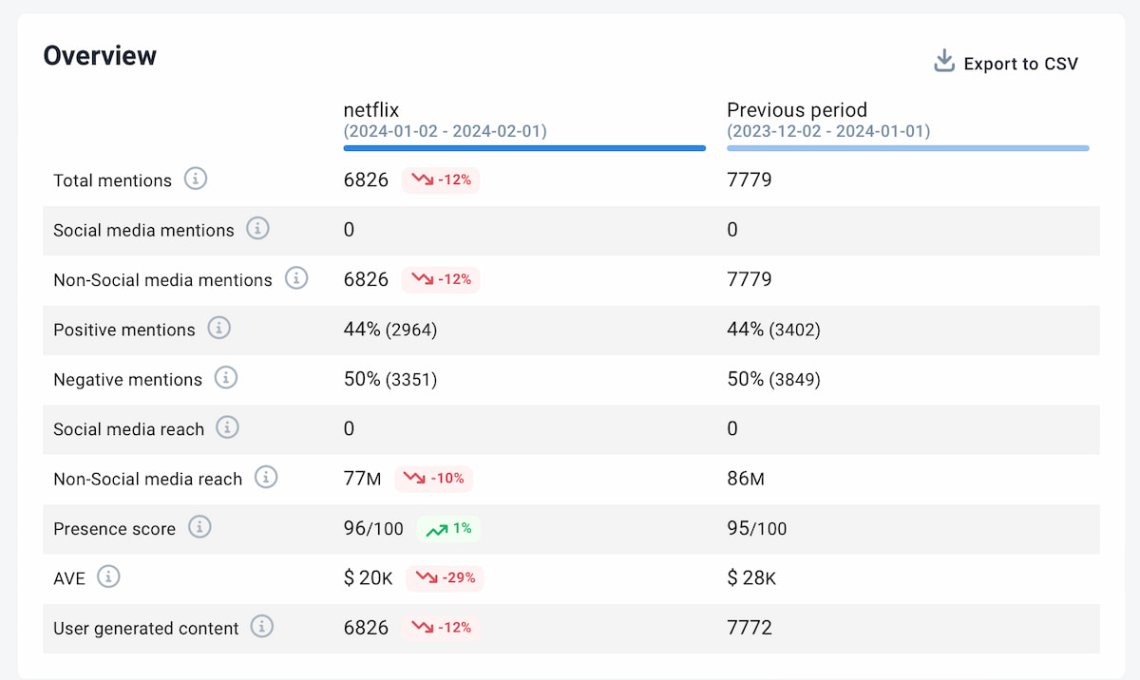
The results show that the Netflix app got 8% fewer reviews. However, the streaming platform app received over 7000 reviews in both periods, which is still impressive.
How about a positive-negative reviews ratio? The Comparison tab results indicate there’s a very slight change towards more negative sentiment.
A quick overview of negative mentions proved that the vast majority of negative reviews don’t refer to the app itself. They’re mostly about Netflix’s pricing and content.
What’s the conclusion? The company’s policy significantly impacts relatively low app ratings (3.8 on the App Store, 4.3 on Google Play).
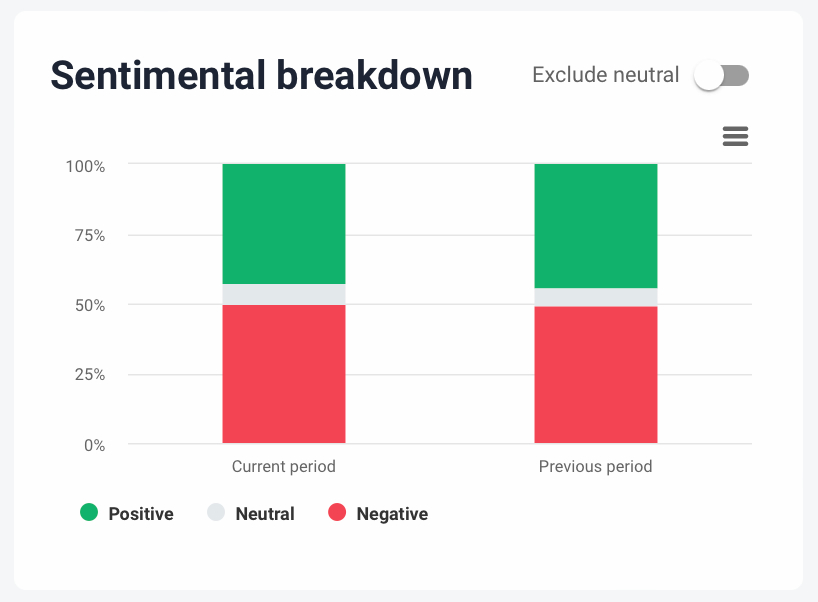
Review monitoring tips
- Find and analyze reviews with advanced filters
Every professional online reputation management tool should have advanced filters. This feature is utterly helpful in finding and analyzing appropriate reviews.
With the Brand24 tool, you can filter all mentions from numerous sources by the mention’s intent. By choosing “Opinion sharing” intent, you’ll narrow down all the results to customer reviews and feedback.
Next, you can analyze the main sources of your reviews, find opinions with the most significant reach, make a sentiment analysis, and so on.
- Set up Storm Alerts
Storm Alerts are instant notifications that inform you about sudden mention volume changes or social media reach changes. This feature is a guard protecting your online reputation against unexpected and potentially powerful hits.
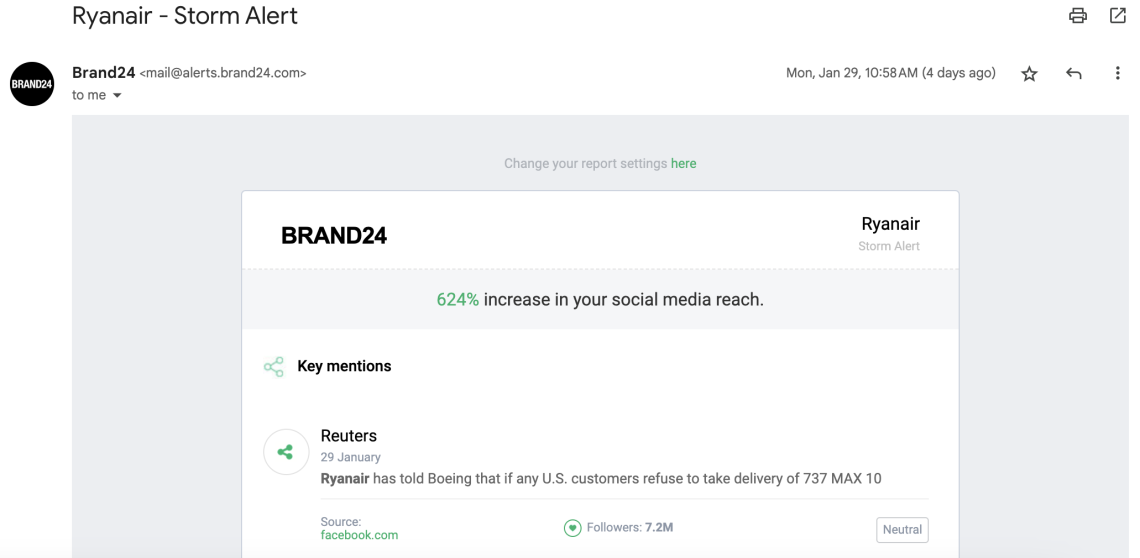
- Identify top influencers.
The public review shared by a niche-specific influencer has extra power. Besides, thanks to identifying your top brand ambassadors, you can expand your brand to a wider audience.
Conclusion
Let’s make it clear – in many cases, your reputation may determine your success or failure. That’s why review monitoring – the process of tracking, analyzing, and managing your offline and online reputation – is absolutely crucial.
It requires gathering and processing data from numerous sources. If you get more than a few monthly reviews, doing so without review monitoring tools is nearly impossible.
Key findings:
- Facebook, Yelp, TripAdvisor, and Google reviews account for 88% of all online evaluations. You should choose a review monitoring tool with access to all these sources’ mentions.
- The top online review management software allows you to track both linked and unlinked reviews published on various websites and platforms.
- Monitoring reviews progress or regress can help you identify your strategy’s success or failure, as well as detect potential pain points.
Read more: Discover top review monitoring solutions powered by advanced AI features.
You can’t stop people from posting bad things about your company online, but you can reduce the impact of negative comments. Manage your reputation effectively with Brand24. Start a 14-day free trial!


